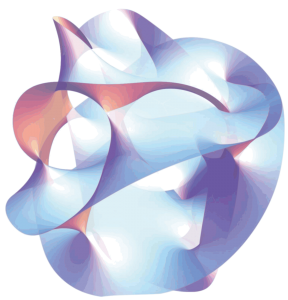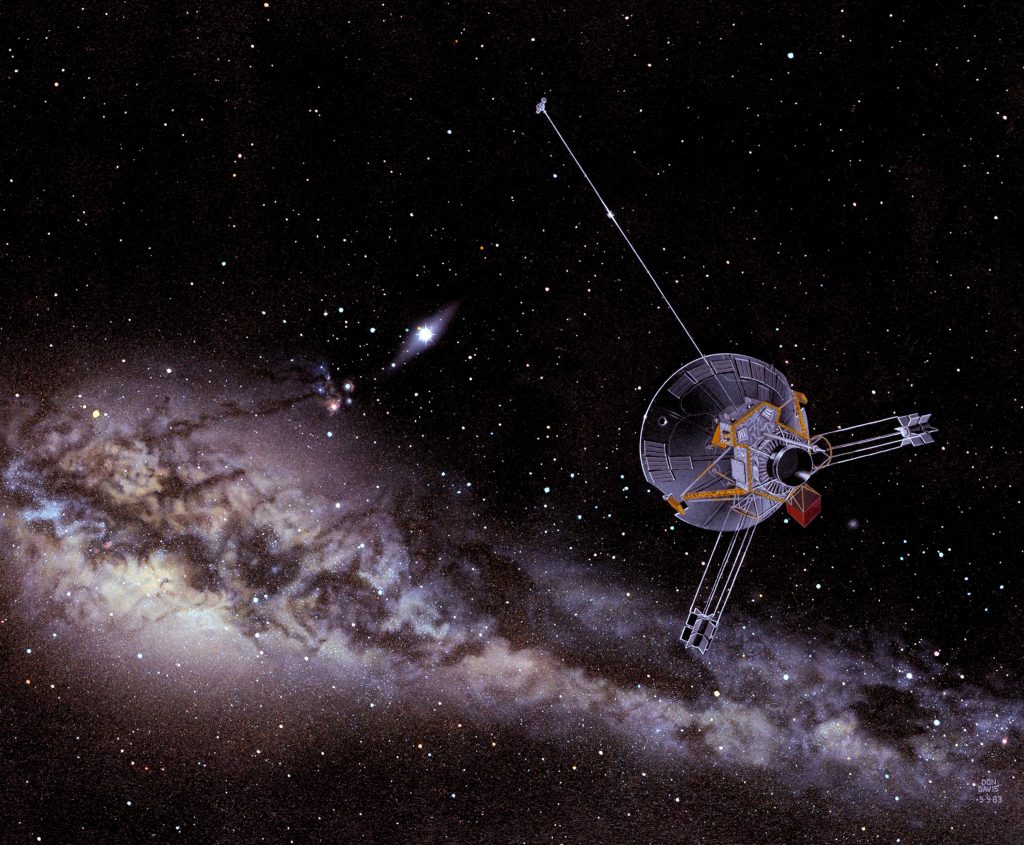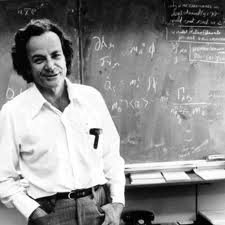Book Review: “The Trouble With Physics”, by Lee Smolin

As you might expect from the title, Lee Smolin’s “The Trouble With Physics” is a case study of the health of an entire field of study (yes, you guessed it, neurosurgery) — it’s a critique of the problems in the modern physics community, written from an insider’s perspective. The author Lee Smolin is a longtime leader of Theoretical Physics, specifically in the area of “quantum gravity”. This particular corner of physics is best defined by what it is not, rather than what it is — Smolin is one of a small community of researchers working on alternatives to String Theory, the dominant Theory of Everything in physics for the last 30-40 years. Smolin has worked in the foundations of physics for decades, has seen the rise of String Theory firsthand, and presents an argument on the damage String Theory has done to the progress of physics. While I’m not sure I agree with all of it, this book is much more than an angry screed written by a scientific crank who backed the wrong horse — it’s a well-written, fascinating, sometimes over-my-head tour around the life and work of a modern physicist.
Smolin chops up his book into four parts:
- The background. A history of all of physics since the dawn of time. Most of these science popularization books includes such a section, often hitting the same stepping stones along the way (e.g. Copernicus, Galileo, Newton, Einstein). Here Smolin focuses the historical tour on the goals and motivations of theoretical physicists who work on the grand theories of everything.
- A more specific background: a history of String Theory. And more specifically, the failures of string theory to live up to the initial hype. Spoiler alert: Lee Smolin is one of the founders of a major competitor to string theory, and has strong beliefs that the hype of String Theory has done major damage to the physics community.
- Alternatives to string theory. If string theory ain’t gonna cut it, what will? For someone actively working on a competitor to string theory, Smolin keeps things pretty fair and balanced.
- The juiciest part of the book, a psychiatric evaluation of the health of the physics community. Alright, this is the dirt I came here for! (Juicy dirt? Hmm, gotta work on my metaphors)
I’ll follow his numerical convention and also split up my review into four parts. (I originally tried 134 parts, but found it was too complicated and arbitrary)
The first section covers a lot of the same ground you’ve read before in physics popularizations, but focused on motivating the raison d’etre of string theory — it’s the crowning achievement in a long line of unifications in the history of physics. Meaning, the unification of two phenomena we see in the world that otherwise might have seemed unrelated. Nothing brightens a physicist’s day more than to discover a single underlying theory that explains two apparently unrelated topics. For example, once we accepted that stars are just like our sun but really far away, and potentially have their own worlds circling them like we circle our sun, we unified our “theories” (really just superstitions and fables) of the nature of the earth and of the heavens.
Once physics got really rolling as a science, James Clerk Maxwell realized how electricity and magnetism are really two facets of the same underlying phenomena, called electromagnetism. (We really should have seen that coming, given the name.) Maxwell figured out how to unify two forces, electricity and mangetism, and critical to the unification was math — specifically, a set of four differential equations (Maxwell’s Equations) which are so elegant and simple that they tempt the discoveror into thinking that the language of physical reality must be math. Later, Einstein’s famous theories of Relativity usurped Newton’s laws of motion, and unified gravity with the concept of space itself. With yet another elegant mathematical model, Einstein showed how the force of gravity can be explained as a warping of spacetime itself. More recently, scientists have been able to unify more forces with electricity and magnetism, forces that operate at the subatomic level and were unknown at Maxwell’s time. While this wasn’t the original plan, physics has turned out to be a series of unifications of different physical phenomena, absorbing more and more fundamental forces like some sort of mathematical katamari, crystallizing into ever more elegant and symmetric theories along the way. Theoretical physicists noted this pattern, eventually incorporating unification itself as a goal of their research.

So what is string theory? Well, we haven’t quite unified everything. On the one hand you’ve got the katamari ball started by Maxwell, which started with electromagnetism, absorbed the strong and weak forces, merged with Quantum Mechanics, and culminated in the most comprehensive theory of physics we have now, the excitingly named Standard Model. On the other, Einstein’s Special and General Theories of Relativity, which are frustratingly the only piece of modern physics that is not part of the Standard Model. We have unified all of physics — every force, every particle, all that quantum shenanigans, everything — except for gravity. Not for lack of trying — Einstein spent most of his career after Relativity on this topic. Unifying gravity with the rest of the Standard Model (or to put it a more sexy way, unifying Einstein’s relativity with Quantum Mechanics) would be the holy grail of physics — you’d probably get yourself a six-pack of Nobels if you manage to finish it up.
So, again, what is string theory? (Pretty annoying of me not to address that question in the last paragraph, especially considering I started the paragraph with it.) String theory is a candidate for a theory that unifies Gravity with the Standard Model, in other words a candidate to be a Grand Theory of Everything, unifying all known physics into one mathematical model. It germinated from a few ideas from around Einstein’s time, fully bloomed in the 1980s, and grew to become the Yankees of the particle physics community (that is to say, the devotees of the Standard Model) through the 90’s and early oughts. While not everyone in physics works on the fundamental theories, those who do are almost entirely string theorists — the theory has shown so much potential and has such ardent supporters that it has pushed out virtually all competitive theories. Only a few stubborn stalwarts work on unification outside of the Cult of String Theory. And as we’ll see, that bothers Lee Smolin.

Listen, goddamnit, what is string theory?? Yes, I’ve been dodging a proper explanation of string theory for two paragraphs now, and I see that I’m not going to get away with a third. The funny thing is, while I have a decent education in physics, I am no closer to understanding String Theory than anyone who’s read some of these popularization books or watched a couple episodes of Nova. Saying string theory is abstract is like saying the Pope might be catholic. The popularizations tell us that in String Theory, the subatomic particles that we always picture as little zero-dimensional points (no spatial extent, just a little infinitely small dot) are actually little one-dimensional strings — extremely small strings, so small that we can’t see that they are strings and not points, even using our best microscopic tools. Some particles are little closed loops of strings, some are open strings. The different types of particles we see are actually simply different vibrational states of strings — what we see as completely distinct fundamental particles are really just different flavors of the same thing. But what is the string made of? Is it actually a real string, or is it yet another of these funny quantum beasts, where it’s hard for humans to visualize so the smart folks call it a string for the sake of explanation? I don’t know. The best I can glean is that like quantum mechanics, the physical descriptions should be taken with a grain of salt — human intuition just doesn’t help us much at the scale of strings.
Aside from proposing this strange “string” as the fundamental building block of the universe, the most notable feature of string theory is that it posits our universe has more than 3 dimensions. If string theory is correct, we live in an eleven dimensional universe (though the exact number of dimensions is different for different versions of string theory). Why extra dimensions? And why 11? Turns out if you add extra spatial dimensions beyond the standard 3 to your theories, sometimes the math works out to resemble recognizable bits of physics that you didn’t intend to put in. These extra bits of physics are said to “pop out” from the theory, meaning you can spot them in the mathematical equations — e.g. some subset of the equations for the theory turn out to be mathematically identical to some other random theory. This was first found by Gunnar Nordstrom, who found that if he worked out what General Relativity looks like in five dimensions, Maxwell’s equations (e.g. the theory of electromagnetism) just happens to come out of the math. Later, Kaluza and Klein extended this idea to more dimensions. These early efforts were still classical theories (e.g. did not incorporate quantum mechanics), and so faded from popularity as the weirdness of quantum mechanics occupied the leading physicists of the day. But the stunning simplicity of how adding dimensions just happened to unify gravity with other forces made it a compelling path — how could this be a coincidence, the original theorists thought. It was neglected for years (execpt for Einstein, who continued alone pursuing a purely classical Unified Field Theory) until it was revisited as the germ of the ideas which became string theory. As it stands now, it looks like string theory may be able to naturally unify the entire Standard Model with Einstein’s Relativity, i.e. unify all known physics theories, by virtue of these extra dimensions.
But string theory can’t yet be declared a success, and Smolin’s book is devoted to telling us why. The perhaps most well-known problem is that the theory isn’t finished. It’s not actually a single, complete theory — there isn’t an agreed-upon final set of equations you could write down for String theory, like you can for Relativity or Maxwell’s equations. We have parts of a theory, but the unfinished portions have so much freedom that what we really have is a giant collection of possible String Theories, so many of them that we call it a “landscape” of theories, and we don’t know which one (if any) is the correct one. In fact there are apparently more possible string theories (10500) than there are elementary particles in the known universe (about 1086). String theorists are optimistic, however, as they believe this cornucopia of theories are really just different manifestations of a deeper, more fundamental theory called M-Theory, a sort of mecha-String-Theory that is the actual theory of everything.

Alright, what the everloving f*** is M-Theory? Fortunately here I don’t have to be quite as embarassed at my own ignorance, because nobody knows what M Theory is. It’s not actually a theory yet — it’s a placeholder for a conjectured theory we have yet to discover that would unify all the various flavors of String Theory. Accordingly, the “inventor” of M Theory, Edward Witten, did not actually pick what the “M” in the name stands for — once we actually find it, he says, we can decide what word best fits. Until then, I get the impression that we should think of “M” standing for “membrane” — what we currently know of M-Theory is that our universe might inhabit a lower-dimensional object in a higher-dimensional space, like a surface of a soap bubble is a 2D surface residing in our 3 dimensional world. And because physicists can’t make anything straightforward, they abbreviate membrane as “brane”. So I now have the pleasure of telling you that the “M” in M-Theory stands for “brane”.
You might think, well if there are 10500 theories, we can whittle them down to the right solution by only picking the ones that match experiment. In other words, surely not all of them will perfectly match every little detail of our universe, right? The problem is the sheer number of solutions — with that many to pick from, you’re essentially guaranteed to find one that matches any experiment. There’s too much freedom — after all, I could invent my own nonsensical theory with enough free parameters to ensure that it matched up with any experiment. So if your potential theory can be tweaked to fit any experiment, is it really a predictive theory? The whole point of a scientific theory is to make predictions that can be demonstrated true or false by experiment, and string theory gives itself so much freedom that it can essentially never be proven false. It can’t be falsified, in the jargon of science. And that’s what has been ultimately disappointing about string theory — it started off as an elegant, simple little theory that so naturally unified all the fundamental forces together. But over time as we filled in the details, the flexibility ballooned to such preposterous size that many are doubting whether string theory can even be called science anymore. If it can’t make falsifiable predictions, and we thus can’t do experiements to test it, then it goes in the category of “cool ideas in metaphysics” instead.
The second section of the book describes this central problem with string theory in detail by walking through the history, from the early rebellious days (when the original founders pushed against the tide to spread their ideas), the rapid rise (as the first small group of devotees abruptly become the dominant paradigm), then the gradual series of challenges and disappointments as the progress slowed. In my opinion, this section of the book sits in an uncanny valley of having too much technical detail to be easily digested, but not enough technical detail to actually understand what he’s talking about. The middle section is littered with qualifiers like “for reasons we won’t get into here”, “details which are hard to explain”, and other pedagogical “this road is closed” signs where Smolin has to mention some detail but doesn’t want to derail the book. Even with my physics background, I didn’t find the detailed description of String Theory and its history to be understandable — to those who work in the field, this section is probably a charming tour of the history from one of the insiders, but to the rest of us it feels a little like listening to my mechanic tell me what’s wrong with my car — maybe if I nod and agree enough, I won’t seem like a complete idiot… This section probably would have beenfitted from a stronger commitment to a single audience — either write the book for us laypeople, or string theory experts, but not both. Though it’s still quite fun to watch these interesting ideas fly over one’s head, occasionally catching a semi-comprehensible idea in the teeth.
Smolin was concerned about the testability of modern physics even before string theory. Before the stringers got involved, there was (and still is) Supersymmetry — another rather abstract candidate for a Grand Unified Theory of Everything. This theory takes a step toward unifying the Standard Model with Gravity, by explaining why elementary particles have mass (which is otherwise unexplained in the Standard Model). The Standard Model itself has some unexplained constants, numbers whose values have to be accepted as-is and aren’t explained by the theory — many of them are the masses of the fundamental particles. Physicists yearn to unify, to explain what otherwise seems arbitrary, so they want to augment the Standard Model with explanations for all of these constants. Otherwise, we can try to measure their values from experiment, but we still wouldn’t know why they take the value they do. Supersymmetry attempts to tackle the arbitrariness of mass by adding on a few new bedrooms to the Standard Model. But by doing this, we actually add to the number of unexplained constants:
“[Adding Supersymmetry] to the standard model of elementary-particle physics, with no additional assumptions, results in a contraption called the minimally supersymmetric standard model, or MSSM. As noted in chapter 1, the original standard model has about 20 free constants we have to adjust by hand to get predictions that agree with experiment. The MSSM adds 105 more free constants.”

I find his use of “contraption” hilarious — I’m picturing a giant machine made of metal and duct tape powered by gerbils running in cages. He chooses that word intentionally to emphasize the inelegance of such a theory. Math-y people agree, the fewer free parameters (a number whose value is left unexplained by the theory) in your model, the more elegant it is. If you have some super-complicated model with thousands of free parameters that you can alter as you see fit, then your theory can contort itself to fit practically any data. Then, the math-y people would argue, you don’t really have a predictive theory at all — you might as well simply be doing a regression fit to some data. A good theory that has “a ring of truth” about it would not be so malleable — it would be hard to customize to fit to new data. In fact, it would make strong predictions about new data, before you take that data, and its prediction would be right — it would fit the experimental results without having to tweak any free parameters at all. String theory has ballooned the problem by orders of magnitude with its “landscape” of possible theories.
An interesting thread that I would have liked to see Smolin develop further is the question of whether we should care if a theory is mathematically elegant. Smolin points out that there’s no good reason that a more elegant theory is “righter” than a less-elegant one. Maybe the laws of physics of our universe happen to fit a messy mathematical model with a couple hundred “free” parameters — numerical constants that we humans aren’t free to choose, but that were somehow picked (perhaps at random) for our universe, and otherwise have no good reason to have the values they do. Or maybe one of the 10500 string theories is right, and there’s no particular good reason why the correct one is correct. Maybe there is a universe for all 10500 theories, and we just happen to be in the one for theory # 1,203,232,957,003. Physics has seemingly agreed to judge theories by their mathematical elegance — simpler is better, more symmetry is better, unifying seemingly unrelated parts of physics is better, and fewer unexplained numerical constants is better. While it seems convincing, this isn’t scientific — ultimately we’re judging theories not by the usual scientific process, but by how pretty they are. Other than Occam’s Razor, there’s no proof that the true theory of the universe need be a simple, mathematically elegant one. Despite point this out, Smolin does seem similarly enamored by mathematical elegance, and in fact argues that string theory’s loss of elegance as it matures is a strong argument against it.

There are other, more technical reasons why String Theory might not be the final theory we’re all hoping for. And by, “more technical”, I mean “less understandable to me”. One is that String Theory is not a “background indepdendent” theory. Despite Smolin spending a lot of time on this objection, I don’t feel like I quite understood it from this book — apparently it has to do with the theory making assumptions about space itself. We’ve all heard that Einstein’s Relativity does away with the need for an absolute space and time — e.g. there is no preferred central point in space, and no preferred clock to measure time. All reference frames are relative. So instead of making assumptions about a “background” of space, General Relativity is in fact an explanation of space. We need not include space and time as axioms that the theory assumes, instead they are outputs of the theory. Smolin contends that String Theory doesn’t include Einstein’s revelation about space, and so is still dependent on assumptions of the background — we have to assume the little strings in string theory still play out their dance on a fixed background, which means reverting to pre-Relativity notions of space. Another of Smolin’s objections is that String Theory hasn’t been proven to be “finite” — this means that if you use the theory to predict the outcome of some experiment, that calculation should never come out to infinity. I never got far enough in physics classes to see it for myself, but apparently modern physics theories are “plagued with infinities”, where calculating some seemingly mundane quantity produces an infinite value. Judging from reviews of Smolin’s book by other experts, the jury is still out on whether string theory avoids infinities, but this is another area where I have to reluctantly give up trying to follow the details to pick a side.
In the third section of the book, Smolin gives a tour of alternatives to String Theory. Despite its far-reaching success, string theory has its detractors, and in fact has not always perfectly aligned with new discoveries. Smolin takes us on a tour of the latter-day deterioration of string theory’s reputation, and what alternatives have been offered by the quantum gravity research community.
A big surprise to the physics community was the discovery of dark matter — this is one of the few potential areas of physics that don’t appear to match either the Standard Model of particle physics nor General Relativity. We didn’t actually directly detect this new matter (still haven’t), but inferred its presence because of anomalies in how galaxies move. We know how much matter is in a galaxy, so we can work through the calculations (given our theories of gravity) to determine how this spiral clump of matter should move. But real galaxies didn’t move that way — in fact the way they move, they must be much more massive than we think. The missing matter that we infer from stellar motion is dark matter — we conjecture that it must be a very unusual form of matter that somehow doesn’t interact with normal everyday matter (otherwise we would have seen it around us in our galaxy by now). Some physicists have wondered if we should take a different conclusion — perhaps its not more matter we should be inferring, but the our laws of gravity aren’t quite right at the scale of galaxies? Hence was born Modified Newtonian Dynamics, or MOND, which is a modification of the usual Netwonian inverse-square law for Gravity to match galactic motion. Presumably it’s an effect that we can’t see at our normal Earthling scale — it’s only observable for extremely small accelerations, which would only become noticeable at the scale of galaxies. To me it seems equally unconvincing to propose an entirely new form of matter as to propose changing the famous inverse-square law, but almost the entire physics community has come down on the side of “make new matter!”. Smolin doesn’t help his case to consider alternatives by referring to the Pioneer Anomaly, an apparent discrepancy in the motion of the Pioneer satellites as they leave our solar system, which looked for a while to be evidence in favor of these heretical gravity theories, but since has been demonstrated to have a mundane engineering explanation.

Then there’s Doubly Special Relativity, which came about from thinking about a simple question. According to Special Relativity, the length of an object depends on the speed of the observer. Typically the homework questions revolve around macroscopic or cosmic-sized object, e.g. a pole vaulter running at close to the speed of light having to account for inadvertent shortening of their pole. But what about the Planck Length? This is the smallest length scale according to quantum physics. Special Relativity of course has no concern about quantum stuff, so it would say that given the appropriate motion you can make any object as short as you wish. Can we impose a constraint into Special Relativity that you can’t contract any object shorter than the Planck Scale? If you do, you wind up with Doubly Special Relativity — “double” because you have added a 2nd constraint (a limit on length contraction) on top of the original constraint (can’t move faster than the speed of light).
Those were interesting, but they’re not fully quantum theories — in fact in the case of MOND, we’re still talking pre-Einstein Newtonian physics. So what alternatives are there for quantum theories of gravity? Probably the most successful is Loop Quantum Gravity, of which Smolin is one of the creators. To his credit, he doesn’t let his baby hog the spotlight, giving a wide tour of quantum theories of gravity such as Roger Penrose’s twistor theory and Alain Connes’ Noncommutative Geometry. And if you expect me to give a summary of them, please refer earlier to my failure to convey the basics of String Theory. Loop Quantum Gravity gets only 10 pages here (out of ~350 pages), so I presume Smolin covers it more in his other books (http://leesmolin.com/). Once again I will fail spectacularly at conveying the basics of this theory, but the gist is that Smolin and others have built a version of quantum mechanics that builds in General Relativity’s relationship between gravity and spacetime itself. In Einstein’s relativity, Gravity isn’t in the same category as other forces (electromagnetism, the strong force, and the weak force) — it’s a consequence of how mass distorts the geometry of space. There’s no concept like this in quantum mechanics, where the effect of forces is conveyed by discrete quanta, like photons, gluons, or the hoped-for graviton. If Smolin and his crew are correct, its because they stopped trying to force gravity to adhere to the same quantum rules as other forces, and instead bake in Einstein’s blend of gravity with spacetime right from the beginning.
So how did they accomplish this? Beats the hell out of me. Smolin doesn’t dive nearly as deep into describing Loop Quantum Gravity as he did for String Theory, possibly because it might be even harder to portray in terms familiar to a layperson. Certainly his summary of it is so abstract as to be almost comical (italics are my commentary):
“A quantum geometry is a certain kind of graph (see Fig 15) [Fig 15 does not help at all]. A quantum spacetime is a sequence of events in which the graph evolves by local changes in its structure. This is best illustrated by examples, which are shown in Fig. 16. [No, Fig 16 does not help either]

The best I can say is in this theory, spacetime itself is quantized (like everything in quantum mechanics) — there is inherently a smallest possible volume of space and smallest increment of time. They then derive how spacetime evolves according to General Relativity, but with the constraint of quantized spacetime. So in an extremely crude sense, both General Relativity and the discrete quantum nature of the universe are baked in from the start, and the challenge then became to derive the rest of physics (e.g. the Standard Model) from that. Which they claim to have done. But either Smolin or I the reader have run out of steam after tackling String Theory, because I more or less gave up trying to understand Loop Quantum Gravity by this point in the book. But at about the point where I hit my limit in understanding the science, I still enjoyed Smolin’s description of the people behind the theories — the anecdotes, the personalities, the discussions, particulary for younger hotshot theorists who haven’t gotten the star treatments yet. He’s very generous in introducing the other players in the Quantum Gravity world (and the antagonists in String Theory, to be fair), giving us a peek into what it must be like hanging out with friends to do a little theorizin’.
Smolin then reaches for something in the physics toolbox that has always made me uneasy — dimensional analysis. The idea is to skip doing the complicated math to solve some problem by playing around with the units of some of the numbers involved. As an example, let’s say you’re doing some physics 101 homework, and you’re asked to find the period of a swinging pendulum. You could, if you’re a weaselly little nerd, work out the forces according to Newton’s laws to determine the period of a pendulum of length L is 2*pi * sqrt(L / g), where g is the gravitational constant. Or, you could play around with combining the various numbers involved until you stumble on the right combination that gives the right units for period. In other words, try various combinations of the numbers (g * L^2? L^5 / (g – L)? g^pi * pi^L?) until you find a combination where the dimensions of the result are time. That’s how the cool people do it. This is well within the allowed techniques in modern physics, but to a layperson it might come across as a weak justification for an answer to a physics problem. I remember being extremely skeptical hearing about this idea in physics class, so I never really trusted it enough to use it — it seemed like cheating, like I could devise all sorts of mathematical expressions that work out to the right dimensions. (Back in school, some friends of mine made use of dimensional analysis for more petty reasons, to convert the answers to our homework problems into super inconvenient units, like velocity of a baseball in light-years per fortnight.) I’ll concede there’s some truth to how constants in physics tend to combine to make other relevant constants, but I’m not quite willing to give up on String Theory based on this argument. Smolin argues that certain combinations of physical constants that deal with the cosmic scale of the universe seem to be tantalizingly close to numbers from some quantum gravity alternative theories. But if I were a young theorist trying to decide which camp to join, I wouldn’t be persuaded.
By the end of the first three sections of the book, Smolin has expended a lot of energy discussing the merits and drawbacks of String Theory, then a smaller amount of energy explaining the alternatives (one of which is his personal research). While I think the section on alternatives suffers in level of detail compared to the String Theory section, and I don’t find his evidence in favor of the alternatives to be very convincing, I believe Smolin is successful in his real goal for the book. He’s not meaning this to be an “us vs. them” mission statement, or propaganda in favor of his Loop Quantum Gravity (although he certainly wouldn’t mind if he can grab some new acolytes along the way), his real goal is to point out the damage that the Cult of Strings has done to the freedom and intellectual flexibility of physics as a whole. He repeatedly states that he’s not sure if Loop Quantum Gravity (or any other alternative theory) will turn out to actually be correct, but he laments how little room String Theory has left these other theories to grow and progress.
Now we get to the fourth part of the book where Smolin tackles the “sociology” of physics. This fourth section of the book is a blend of “why can’t we make room for more than just string theory in fundamental physics?” (the overall theme of the book so far), with some more general criticism of the prejudices and “character flaws” in the whole of science. On the first part (dominance of string theory), I’m happy to read about the conflict but have no strong opinion either way — while I generally find Smolin’s critique of String Theory fairly convincing, I’m less convinced by his evidence in favor of alternative theories. On the second part (the flaws in the values and social mores of the physics community) I wholeheartedly agree — I think Smolin is spot-on, and physics would do well to pay attention or see its status in science continue to drop.
As Smolin gets into the psychiatric evaluation of physics as a community, he draws out a comparison between two different styles of physics. Not in the sense of adhering to two schools of thought (e.g. String Theory vs. Loop Quantum Gravity), but the personalities and research style of the practicing physicist. Smolin calls these two styles the “seer” and the “craftsperson”. The seer is a loner, deep thinker, unafraid to challenge the status quo, unsatisfied by appealing to experts. The “craftsperson”, in contrast, is perhaps more technically skilled, more facile with the most current tools of the science, but doesn’t move beyond the current paradigm. Or in Kuhn’s terms, there are those who work inside the current paradigm, improving it or filling out details, and there are those who create new paradigms.
Smolin associates the “seer” strongly with Einstein, and in fact in this article he coins the term “Einsteinians” for this group. There are few true Einsteinians, Smolin contends, especially in the 20th century as physics changed from the purview of the “natural philosopher” (often a thoughtful wunderkind sponsored by a rich patron) to become a competitive research industry. Smolin’s depiction of the “craftspeople” group resembles one physicist in particular, that I’d like to take the liberty of naming the group after him — I’m calling them “Feynmanians”. Smolin doesn’t necessarily attribute the demise of the “Einsteinian” to Richard Feynman, but I do — his influence on the personality of the post-WWII research physicist looms much larger today than any other physicist, in my opinion.
So who are these groups?
- The Einsteinians: They see little demarcation between the foundations of physics and philosophy. Some of what they do might be classifiable as metaphysics. They stroll slowly through the parks around Princeton’s Institute for Advanced Study, pondering an uneasiness about a recent theory that they can’t quite put their finger on. They’re unconcerned with deadlines — the theory will be finished when its finished. They forgot to eat lunch today, again.
- The Feynmanians: no-nonsense, practical-minded, “blue collar” theorists. They are more focused on “real-world” ideas, experimental evidence, and are impatient with (or downright disdainful of) philosophy and metaphysics. They can be brash, seem rushed or impatient, lack the social niceties like politeness or deference to authority. They have a sense of rolling up their sleeves, of getting things done, of making concrete progress, philosophy be damned. They’re proud to know how to change the oil in their car.

In my opinion there’s value to both sides, and 20th century physics has swung too much toward the Feynmans. Ironically for a deep thinker like Feynman who criticized cultish thinking, a cult has grown around the memory of Feynman. The cult contains some good traits, like favoring informality over pretense, demanding deep thought and rigor in science, requiring a close link to experimental results, thinking through the meaning behind statements rather than repeating conventional wisdom. But along with these come ugly traits — unhealthy ego, arrogance, dismissal of “slower” thinkers, casual dismissal of details. Contrary to the caricature of Feynman pushed by the marketing departments of university bookstores, Feynman was often a raging asshole. Feynman’s treatment of women is played for laughs in his books, but even the sanitised version in his books is brow-raising today. (And woe to the comment section of the physicist who rightfully raises the issues around Fenyman! Looking forward to the hate mail here soon.) And while I certainly don’t intend to say that brash, go-getter physicists are also womanizers, and I certainly admire Feynman and have his books on my shelf, I feel we should pay close attention to the behavior of those we emulate. Sometimes when you think you’re being an intellectual rebel, demanding rigor from colleages, cutting through all bullshit and pretense to get to the heart of the matter, you’re just being an asshole.
Smolin clearly sides with the Einsteinians, and sounds tired from decades of dealing with the abrasive Feynmanians:
“As I reflect on the scientific careers of the people I have known these last thirty years, it seems to me more and more that these career decisions hinge on character. Some people will happily jump on the next big thing, give it all they’ve got, and in this way make important contributions to fast-moving fields. Others just don’t have the temperament to do this. Some people need to think through everything very carefully, and this takes time, as they get easily confused. It’s not hard to feel superior to such people, until you remember that Einstein was one of them. In my experience, the truly shocking new ideas and innovations tend to come from such people. Still others — and I belong to this third group — just have to go their own way, and will flee fields for no better reason than that it offends them that some people are joining in because it feels good to be on the winning side. So I no longer get bothered when I disagree with what other people are doing, because I see that temperament pretty much determines what kind of science they will do. Luckily for science, the contributions of the whole range of types are needed. Those who do good science, I’ve come to think, do so because they choose problems that are suited to them.”.
Now I think Smolin is proposing a false trichotomy here — I suspect Smolin actually believes group 3 (the contrarians) is actually identical to group 2 (the Einsteinians), but he’s trying to be modest. But I don’t see it as bragging to say that you emulate the style of Einstein — we can certainly take lessons from how Einstein approached his research, even if we can’t master physics as completely as him. I completely agree with Smolin that physics (and all of science) needs a healthy mixture of both, and when the pendulum swings too far one way, the progress of physics will suffer.
I naturally lean toward the Feynman camp in my personal style, and I’ve worked with several in the Einstein camp. I like to think I’m faster, make quicker decisions, come to conclusions faster, but have learned the hard way to listen to the Einsteinians, give them space to think and work out results for themselves. Because I’m not as smart as Einstein (or Feynman), I’ve been embarassed to find that my rapid decisive leadership led directly down the wrong path, and was saved by a thoughtful Einsteinian on the team raising their hand to say “now wait a minute…”. Often I work best in a team with a mix of Feynmanians and Einsteinians, so we account for each other’s weaknesses. But it takes strong sense of selfessness, and of commitment to the team, and this is often difficult in the competitive world of science. For a young physics professor trying to claw onto a tenure track position? No wonder the Feynmanian style has won out.

Lastly, I’ve saved my highest compliment for Smolin’s writing for a topic he brings up briefly — a topic beyond the string theory debate, and beyond the Einsteinians vs. Feynmanians. This topic? The unhealthy (and frankly embarassing) lack of diversity in physics. For example, it’s well-known that for some reason STEM fields have fewer women and underrepresented minorities. What might be surprising is that physics is the most dramatic of the bunch — math, for example, has a much better representation of women than physics as a college major, which casts doubt on the old attitude that men are somehow inherently better at mathematical topics. Smolin does not equivocate on why physics is such an anomaly, even among STEM topics — “I believe the answer is simple: blatant prejudice”. He argues that the hiring and funding practices of the physics research community have become locked into groupthink, which encourages supporting those who work on the hottest topics (String Theory), bring the most attention and buzz to the department (the Feynmanians), and who look like the community (a whole buncha white guys). Smolin doesn’t linger long on this topic, but I feel this is a very important topic for the physics community to face, and having someone of his stature express this view so bluntly is critical to improving the problem. I frankly could read another 200 pages of his views on this.
Now that I’ve explained string theory in astounding detail (yet with lucid, almost poetic prose), I’d like to wrap up this review by saying how much I enjoyed this book. I didn’t have to follow all of it to enjoy the tour of modern physics — it reminded me of being back in school, sitting in a research seminar hearing a presentation that was way over my head. And I’m personally always a fan of hearing about the personalities behind the science — reading anecdotes of Smolin working with his Quantum Gravity colleagues has a nice humanizing effect on an otherwise extremely abstract endeavor. I’ve probably gotten enough of a taste of string theory for a few years thanks to Smolin’s book, but I am hoping he continues to write and publish on the topic of the sociology of physics — how we as a community can be more inclusive, less cutthroat, and perhaps make room for the Einsteins of the next generation.

 Follow Timeblimp on Twitter
Follow Timeblimp on Twitter